When Dr. Geoffrey Hinton first launched himself into the study of neural networks in 1972 as a student at the University of Edinburgh, he had no idea what he was getting himself into.
But forty years later, in 2012, the artificial intelligence (AI) technology Dr. Hinton pioneered would get picked up by Alphabet (GOOGL) for an incredible $44 million.
Google had to beat out three other bidders in the then-secret auction – Microsoft (MSFT), Baidu, and DeepMind – to get its hands on the AI system…
It was the same AI tech that would go on to spark ChatGPT, Google Bard, and many of the other modern AI applications we know today…
And the same one that Dr. Hinton now regrets ever creating.
In a chilling New York Times interview released today, Dr. Hinton announced he left his career at Google to warn of the “profound risks to society and humanity” that the very AI he revolutionized now poses…
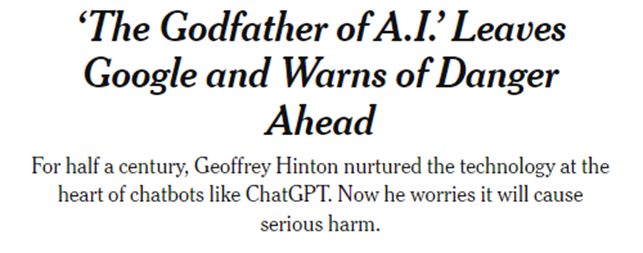
At the rate companies are advancing AI without considering the risks, Dr. Hinton cautioned, pretty soon, folks may “not be able to know what’s true anymore.”
“It is hard to see how you can prevent the bad actors from using it for bad things,” he said.
Now, AI is encroaching on the classroom – and parents are justifiably concerned about the impact it could have on their children’s wellbeing.
While educators remain split over how the technology will impact student learning and outcomes, the (scary) truth is, young people are already utilizing AI in schools and in social circles.
Take social media giant Snapchat (SNAP) and educational tech provider Chegg (CHGG).
After seeing their share prices plummet over the last two years, both companies are looking to AI to help them recover:
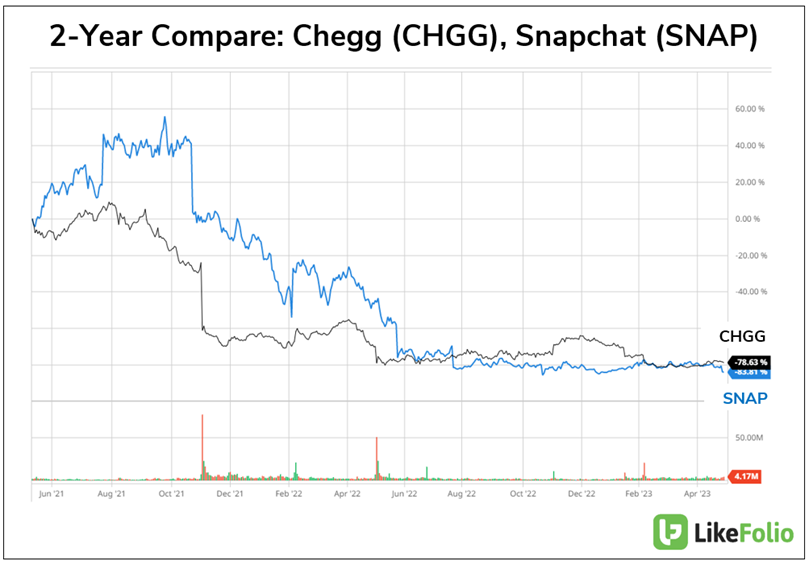
Could AI tools in the classroom be the saving grace these companies need? Or will it be their undoing?
Let’s take a look…
CheggMate: Too Late?
About a month ago, Chegg announced it would leverage ChatGPT to power CheggMate, a study aide tailored to students that aims to personalize practice tests and guide study.

And on its first-quarter earnings call earlier this week, Chegg CEO Dan Rosensweig reiterated that his company is “embracing [AI] aggressively and prioritizing our investments to meet this opportunity.”
The problem for Chegg is, it’s too late…
ChatGPT launched back in November – meaning students have had nearly six months to learn and master the already available chatbot.
Why would they pay for a toned-down version of the service when they have one they already know how to use for free?
That was the takeaway for investors this week, who were so spooked over Chegg’s AI misfire that they sent the stock tumbling 37%.
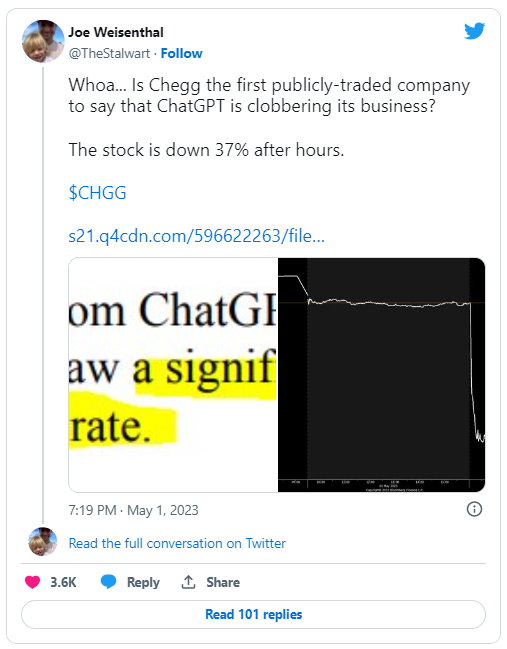
We’ll be tracking the adoption of CheggMate in real time and expect updates post-rollout – but the initial look is not positive for the company’s business model.
Chegg Consumer Happiness is up by three points year-over-year but Purchase Intent (PI) Mentions have fallen 25% over the same period:

Snapchat, on the other hand, finds itself if a different position…
Snapchat’s “My AI” Shows Promise
Snapchat’s “My AI” chatbot, which acts like a virtual friend you can chat with about virtually anything, is now available to all of its 750 million monthly users for free.
The large-scale release was met with confusion and some “creepy” negative feedback from users:

The less-than-perfect rollout is one of the reasons we were able to nail a bearish SNAP call ahead of earnings last week.
But in a qualitative review of SNAP’s AI integration, we are starting to see some positive feedback from already engaged users noting some useful applications, like homework.
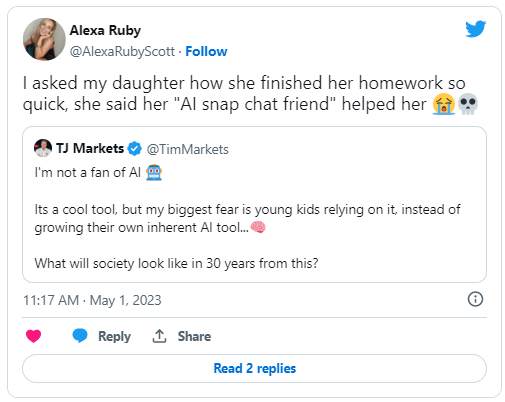
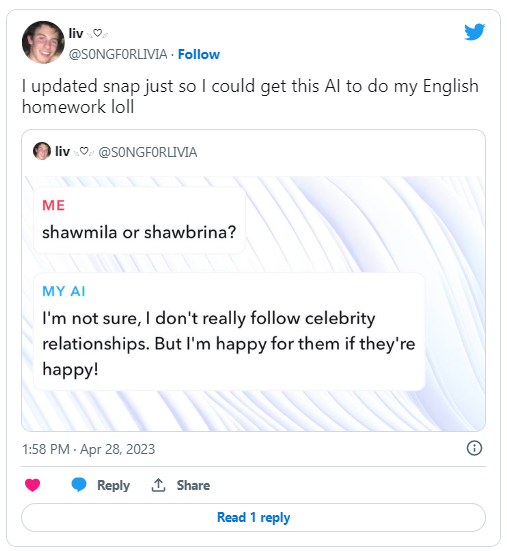
With nearly half of its user base made up of users aged 15 to 25, Snapchat’s “My AI” could have serious applications in classrooms.
And looking ahead, we’ll be tuned into whether or not SNAP’s AI integration proves meaningful to users – as in, meaningful enough to increase engagement.
For example, Snapchat is integrating My AI into its other features, allowing it to make recommendations for AR filters and places to visit on the map. Soon, users will be able to send visual messages to My AI and receive generated responses, such as images.
(Parents, you’ve been warned.)
Snapchat CEO Evan Spiegel remains tight-lipped about My AI’s potential impact on its advertising business. But he sees it as a critical part of the company’s future growth, stating that more than 2 million chats per day are already happening with My AI.
Snapchat’s already-engaged userbase and unrelated-to-AI social applications help to distinguish this company from a name like Chegg.
Bottom line: Snapchat needs all the help it can get to keep users engaged, attract new downloaders, and lure back advertisers.
We’ll be tracking Snapchat AI mentions for confirmation of sentiment normalization and long-term adoption.
Until next time,

Andy Swan
Co-Founder
